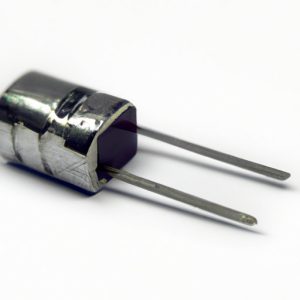What is the status of the All -in -one inductance industry?
Title: The All-in-One Inductance Industry: A Comprehensive Overview

Introduction:
The all-in-one inductance industry has witnessed significant growth and development in recent years. As a crucial component in various electronic devices and systems, inductors play a vital role in energy storage, filtering, and signal processing. This article aims to provide a comprehensive overview of the current status of the all-in-one inductance industry, including its market trends, technological advancements, applications, and future prospects.
Market Trends:
The all-in-one inductance industry has experienced steady growth due to the increasing demand for electronic devices across various sectors. The market is primarily driven by the rising adoption of inductors in automotive electronics, consumer electronics, telecommunications, and industrial applications. The growing need for compact and efficient inductors has led to the development of all-in-one inductance solutions that integrate multiple functionalities into a single device.
Technological Advancements:
Advancements in materials, design, and manufacturing processes have revolutionized the all-in-one inductance industry. Traditional inductors were bulky and had limited capabilities. However, with the advent of new materials and innovative designs, all-in-one inductors now offer higher inductance values, improved efficiency, and reduced size. The integration of advanced magnetic materials, such as ferrite and nanocrystalline cores, has significantly enhanced the performance of all-in-one inductors.
Furthermore, the development of advanced manufacturing techniques, such as thin-film deposition and 3D printing, has enabled the production of highly compact and customizable all-in-one inductors. These technological advancements have not only improved the performance of inductors but also reduced their production costs, making them more accessible to a wider range of applications.
Applications:
The all-in-one inductance industry finds applications in various sectors, including automotive, consumer electronics, telecommunications, and industrial equipment. In the automotive sector, all-in-one inductors are used in powertrain systems, infotainment systems, and advanced driver-assistance systems (ADAS). The demand for electric vehicles (EVs) has further fueled the need for compact and efficient inductors to support the high-frequency switching required in EV power electronics.
In consumer electronics, all-in-one inductors are utilized in smartphones, tablets, wearables, and other portable devices. These inductors help in power management, noise suppression, and signal filtering, ensuring optimal performance and reliability. The telecommunications sector relies on all-in-one inductors for signal conditioning, impedance matching, and RF filtering in wireless communication systems.
Industrial applications of all-in-one inductors include power supplies, motor drives, renewable energy systems, and robotics. The ability of these inductors to handle high currents, operate at high frequencies, and withstand harsh environments makes them ideal for industrial applications.
Future Prospects:
The future of the all-in-one inductance industry looks promising, driven by the increasing demand for miniaturization, improved performance, and energy efficiency. As electronic devices continue to shrink in size, the need for compact and integrated inductors will rise. The development of advanced materials, such as magnetic nanoparticles and metamaterials, holds great potential for further enhancing the performance of all-in-one inductors.
Moreover, the integration of all-in-one inductors with other passive components, such as capacitors and resistors, is expected to gain traction. This integration will enable the creation of highly integrated passive modules, reducing the overall footprint and simplifying the design process.
Additionally, the growing focus on renewable energy sources and the increasing adoption of electric vehicles will drive the demand for high-power all-in-one inductors capable of handling high currents and operating at high frequencies.
Conclusion:
The all-in-one inductance industry has witnessed significant growth and technological advancements in recent years. The market trends indicate a rising demand for compact, efficient, and integrated inductors across various sectors. With continuous research and development efforts, the future of the all-in-one inductance industry looks promising, offering improved performance, miniaturization, and energy efficiency. As electronic devices continue to evolve, all-in-one inductors will play a crucial role in enabling their functionality and enhancing their overall performance.


